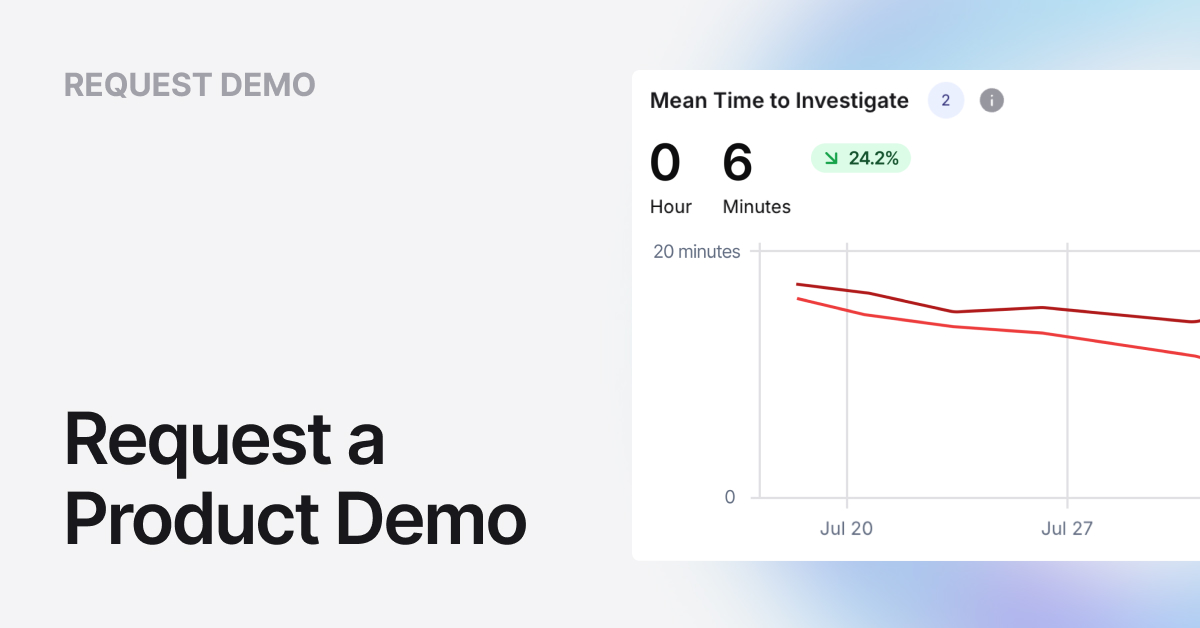Why every organization needs a modern SOC
Attackers today operate around the clock, using automation, AI, and social engineering to breach even the most mature environments. For organizations serious about resilience, one capability has become indispensable: the Security Operations Center, or SOC.
A SOC is the nerve center of an organization’s defense, where security analysts, processes, and technology converge to monitor, detect, and respond to cyber threats in real time. Whether you’re leading a global security team or managing IT for a mid-sized enterprise, understanding how a SOC functions and how it’s evolving is key to keeping your business protected.
What is a Security Operations Center (SOC)?
A Security Operations Center is a centralized team and technology hub dedicated to protecting an organization’s digital assets. It continuously monitors systems, networks, endpoints, and applications to identify and mitigate potential security incidents before they cause damage.
According to the Cybersecurity and Infrastructure Security Agency (CISA), an effective SOC combines people, processes, and technology to provide a comprehensive defense capability. Its primary goal is to detect, analyze, respond to, and recover from cybersecurity threats.
Core functions of a SOC
While every SOC has its own structure and maturity level, most share the same essential responsibilities.
Continuous monitoring and detection
SOCs leverage many different tools, such as security information and event management (SIEM) tools, intrusion detection systems (IDS), endpoint detection and response (EDR) platforms, and AI SOC platforms, to continuously collect and analyze telemetry from across the enterprise. The goal is to spot anomalies and indicators of compromise before they escalate into breaches.
Incident response and containment
When a potential incident is detected, SOC analysts triage alerts, verify the threat, and initiate containment or eradication actions. The faster this happens, the smaller the impact. According to Gartner, organizations with mature SOCs reduce mean time to respond (MTTR) by over 50% compared to those relying on manual workflows.
Threat intelligence and hunting
A modern SOC goes beyond reacting to alerts to also proactively threat hunt. Proactive threat hunting involves searching for signs of advanced threats that bypass automated tools. Many SOCs integrate threat intelligence feeds from trusted sources such as MITRE ATT&CK or open-source communities to enrich investigations and refine detection rules.
Reporting and compliance
SOC teams also play a key role in maintaining compliance with standards like ISO 27001, NIST CSF, and GDPR. Regular reporting and documentation help executives understand risk exposure and demonstrate due diligence to regulators.
The structure of a modern SOC
A typical SOC is structured in tiers to ensure efficient use of resources and expertise.
- Tier 1 Alert triage: Analysts review incoming alerts, dismiss false positives, and escalate verified threats.
- Tier 2 Investigation: Senior analysts conduct deeper investigations to determine the attack’s scope and impact.
- Tier 3 Threat hunting and forensics: Experts perform advanced analysis, reverse engineering, and continuous improvement.
- SOC management: Leads oversee operations, maintain performance metrics, and align security goals with business priorities.
In advanced environments, SOCs may also include automation engineers and data scientists who specialize in detection engineering and AI-driven correlation. For example, when evaluating an AI SOC, many organizations consider how artificial intelligence can accelerate analysis and reduce alert fatigue.
Types of SOC models
Organizations build SOCs in different ways depending on their size, resources, and risk profile.
On-premises SOC
An internal, fully staffed team operating from a dedicated facility. Offers full control but requires significant investment in people and technology.
Virtual or distributed SOC
Analysts work remotely or across regions, using cloud-based collaboration and monitoring platforms. This model supports 24/7 coverage and cost flexibility.
Managed SOC, SOC-as-a-Service, Managed Detection and Response
A third-party provider handles monitoring and response on behalf of the organization. This model is gaining traction among mid-market enterprises that lack in-house expertise.
Hybrid SOC
Combines internal oversight with outsourced support. The hybrid approach often balances control with scalability and allows organizations to maintain visibility while leveraging external expertise.
Key challenges facing today’s SOCs
Even with the best tools and people, SOCs face significant operational challenges:
- Alert overload: Analysts often deal with thousands of alerts daily, many of which are false positives.
- Talent shortage: The cybersecurity workforce gap means finding skilled analysts remains difficult.
- Tool sprawl: Multiple overlapping platforms can reduce visibility instead of improving it.
- Evolving threats: Attackers use AI and automation to outpace traditional defenses.
Effective SOCs are shifting toward AI SOC models where automation, contextual prioritization, and continuous learning help to stay ahead.
The future of the SOC: automation, AI, and adaptive defense
Tomorrow’s SOC will look very different from today’s. Analysts will partner with AI systems that can correlate massive datasets, predict attacker behavior, and suggest optimal response paths. The concept of a self-healing or autonomous SOC, where machine learning models handle detection, triage, investigation, and even partial remediation, is moving from vision to reality.
Forward-looking organizations are already implementing adaptive SOCs that learn from each incident and improve over time. This approach not only boosts efficiency but also enhances resilience against unknown threats.
The focus is shifting from reactive defense to proactive, intelligence-led operations powered by automation and collaboration.
Making your SOC a competitive advantage
A well-designed Security Operations Center is a strategic asset. By combining skilled analysts, intelligent AI, and data-driven decision-making, organizations can transform their SOC into a proactive engine for resilience and trust.
If your organization is exploring how to modernize or automate its SOC, consider starting with a look at a modern agentic SOC platform. Investing in the right strategy today can be the difference between preventing an incident and responding to one tomorrow.

